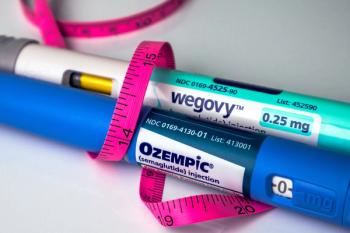
How to cut your counterfeit risk
Over the past five years, the number of counterfeit drug cases in the United States has skyrocketed. Between 2000 and 2004, the number of counterfeit drug cases initiated by the Food & Drug Administration's Office of Criminal Investigations rose by more than 900%, from just six cases in 2000, to 58 cases in 2004.
Over the past five years, the number of counterfeit drug cases in the United States has skyrocketed. Between 2000 and 2004, the number of counterfeit drug cases initiated by the Food & Drug Administration's Office of Criminal Investigations rose by more than 900%, from just six cases in 2000, to 58 cases in 2004.
The FDA and other players in the drug distribution industry are taking steps to combat the infiltration of counterfeit drugs into legitimate commerce. However, implementing new technology, such as radio frequency identification, will take time. Meanwhile, the victims of counterfeit drugs are understandably enraged. Many are seeking recourse through lawsuits against the only targets they can identify: drugmakers, wholesalers, and pharmacies. Although final decisions have yet to be rendered, so far the courts are permitting the cases to go forward against the dispensing pharmacies (even while dismissing many of the claims against the manufacturers and wholesalers).
In the cases currently pending, the plaintiffs are presenting a wide variety of claims, including negligence, breach of implied warranties of merchantability and fitness for a particular purpose, breach of express warranty, fraudulent concealment, and consumer fraud. Significantly, these cases do not claim that the pharmacy knew the dispensed drug was counterfeit, but rather that the pharmacy should be liable even without such knowledge. Based on the fact that the drug in the bottle did not match the prescription or the label, plaintiffs claim that the pharmacy: did not correctly fill the prescription; misbranded the drug under the Food, Drug & Cosmetic Act; or breached an affirmative representation that what it was selling was the authentic drug.
So the question becomes, how can pharmacies minimize their liability risks in such lawsuits? The following steps may help reduce instances of counterfeiting and also serve as evidence that a pharmacy acted reasonably and without negligence in the event that it is named in a counterfeiting lawsuit.
1. Pay particular attention to products considered to be at "high risk" for counterfeiting. Establish procedures to regularly check labels, drug appearance, condition of packaging, and so on. The National Association of Boards of Pharmacy has established a list of "Susceptible Products," which can be found at
2. Subscribe to the FDA's MedWatch E-List (
3. Establish the integrity of drug suppliers-
a. Ask wholesalers to provide a written description of anticounterfeiting measures (e.g., compliance with the Healthcare Distribution Management Association's Voluntary Guidelines for Pharmaceutical System Integrity posted at
b. Regularly check with your state board of pharmacy, department of health, or other appropriate state agency for information regarding problematic wholesalers in your state. Request that they post such information on state Web sites.
c. Use secondary distributors only if they can provide written verification that they are authorized distributors purchasing directly from authorized manufacturers and are in good standing with the applicable state licensing agency.
d. If purchasing from a distributor that does not buy directly from the manufacturer, require and closely scrutinize pedigrees (complete sales histories) of the products being purchased.
4. Alert staff pharmacists to consider whether an unusual adverse drug reaction or unusual medication response could be the result of a counterfeit product. Take comments and complaints about products (such as a change in effectiveness or change in taste) seriously and investigate them promptly.
5. Negotiate strong contractual warranties and indemnifications from wholesalers and distributors. Require an express warranty that the product delivered is what the label says it is and that it has met all storage standards.
6. If you encounter a questionable product, contact the manufacturer and wholesaler in writing to determine follow-up steps to verify authenticity. If the product is confirmed as unauthentic, contact the FDA through the MedWatch program.
In today's litigious climate, pharmacies cannot ignore the possibility of being sued for dispensing counterfeit drugs, even if they did so unknowingly. However, by implementing some commonsense policies and procedures, pharmacies can greatly reduce their risk of a bad outcome if they become embroiled in such a lawsuit.
Laurel I. Wala, Esq. is a partner at the Phoenix Law Group of Feldman, Brown, Wala, Hall & Agena (
Newsletter
Pharmacy practice is always changing. Stay ahead of the curve with the Drug Topics newsletter and get the latest drug information, industry trends, and patient care tips.




